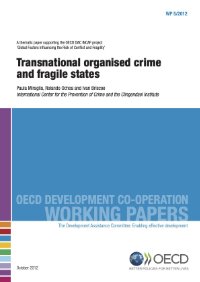Edited by Cynthia J. Arnson and Eric L. Olson
In early May 2011, dozens of gunmen entered a farm in Guatemala’s Petén region, murdering and decapitating 27 people. Guatemalan authorities as well as speculation in the press have blamed the Zetas, a violent Mexican drug trafficking cartel increasingly active in Guatemala and other parts of Central America . Whether a vengeance killing following the murder of a presumed drug lord, or a struggle amongst the Zetas and Mexico’s Sinaloa cartel for the control of territory and smuggling routes, the massacre underscores the vulnerability of the civilian population in unsecured border areas between Mexico and Guatemala, where narcotics and human trafficking flourish. In response, the government of President Álvaro Colom declared a state of siege similar to the one declared from December 2010-February 2011 in the department of Alta Verapaz. This incident and others like it underscore the serious threat to democratic governance, human rights, and the rule of law posed by organized crime in Central America. The international community has begun to address the burgeoning crisis and commit significant resources to the fight against crime and violence; indeed, not since the Central American wars of the 1980s-1980s has the region commanded so much attention in the international arena. To better understand the nature, origins, and evolution of organized crime in Central America, and thereby contribute to the efforts of policymakers and civil society to address it, the Latin American Program commissioned a series of case studies that looked at the countries of the so-called Northern Triangle—El Salvador, Guatemala, and Honduras— and at the broader regional context affecting national dynamics. Our interest was to understand more fully how organized crime has evolved in Central America, and to examine the links between organized crime and traffickers in Central America, Mexico and Colombia. What role does Central America play in the supply chain for illegal goods between the Andes and the United States, and how have trafficking organizations from these areas related to one another over time? The growing presence and activities of organized crime groups in Central America has worsened an already alarming crisis of citizen security. In mid- 2010, the Inter-American Commission on Human Rights reported that Latin America had the highest levels of youth violence in the world . UN figures indicate that the rate of youth homicide in Latin America is more than double that of Africa, and 36 times the rate of developed countries . An oft-referenced study by the United Nations Development Program (UNDP) noted in 2009 that the seven countries of Central America—Belize, Costa Rica, El Salvador, Guatemala, Honduras, Nicaragua, and Panama—register the highest levels of non-political violence in the world; this observation has been echoed in statements by the U.S. Department of Defense . The situation is most acute in the countries of the Northern Triangle6 . In El Salvador alone, sixty-eight percent of homicide victims are between the ages of fifteen and thirty-four, and nine out of ten victims are male7 . Countries such as Costa Rica, Nicaragua, and Belize are also witnessing rising rates of insecurity associated with the increased presence of organized crime.
Washington, DC: Woodrow Wilson International Center for Scholars, Latin American Program, 2011. 254p.





















